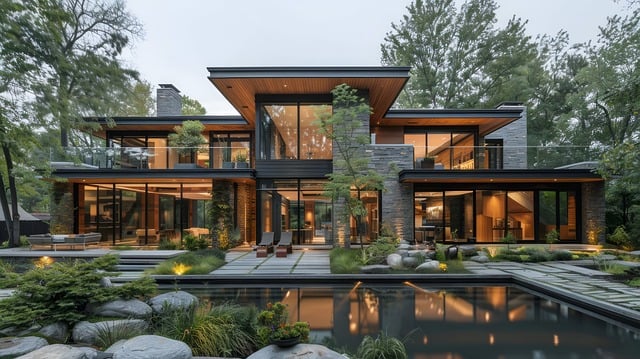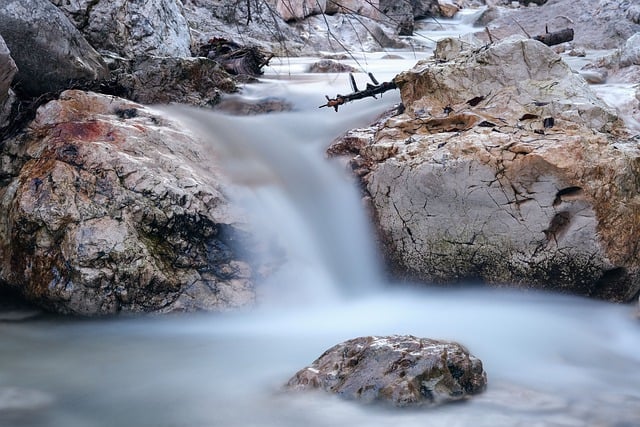When designing a pet-friendly home landscape, it's crucial to focus on non-toxic plants that are safe for animals. The article emphasizes the importance of selecting from a variety of aesthetically pleasing and harmless alternatives during landscaping to protect pets and support biodiversity. Key plants like Spider Plant, Peace Lily, Snake Plant (Sansevieria), Asparagus Ferns, Lavender (Lavandula spp.), African Violet (Saintpaulia ionantha), Marigold (Tagetes spp.), Snapdragon (Antirrhinum majus), and Chlorophytum comosum are highlighted as pet-safe options that also enhance the landscape. For a secure garden, it's essential to avoid toxic plants and create designated pet play areas enclosed by fencing. Seasonal variations in plant toxicity must be considered; for instance, lilies are consistently hazardous to cats. By utilizing extensive databases of pet-safe plants, pet owners can maintain a beautiful and secure outdoor space throughout all seasons, ensuring their pets' safety while enjoying the benefits of landscaping.
pets thrive in environments that are safe and conducive to their well-being. As pet owners seek to extend their living spaces outdoors, ensuring a non-toxic plant selection within the landscape becomes paramount. This article delves into the critical aspects of creating a pet-friendly garden, offering a guide to safe plants and landscaping tips that prioritize your furry companions’ health. From the Top 10 Non-Toxic Plants to incorporate into your yard to seasonal considerations for year-round safety, learn how to transform your landscape into a haven where both you and your pets can enjoy the beauty of nature without harm.
- Understanding the Importance of Non-Toxic Plant Selection for Pet-Friendly Landscapes
- A Comprehensive Guide to Safe Plants for Pet Owners: Landscaping with a Tail Wag
- Top 10 Non-Toxic Plants to Incorporate into Your Pet-Safe Garden Landscape
- Creating a Pet Haven: Tips for Integrating Safe Vegetation in Your Yard's Landscape Design
- Seasonal Considerations and Plant Selection: Keeping Your Pet Safe Year-Round in the Landscape
Understanding the Importance of Non-Toxic Plant Selection for Pet-Friendly Landscapes

When designing a pet-friendly landscape, the selection of plants becomes a critical aspect of safe and healthy outdoor spaces for our furry companions. Pets are naturally curious, and many common garden plants can pose serious health risks if ingested. To mitigate these dangers, it’s crucial to choose from the wide array of non-toxic alternatives that are just as aesthetically pleasing and environmentally suitable for landscaping. These plant choices not only ensure the well-being of pets but also contribute to a thriving ecosystem, promoting biodiversity while maintaining a pet safe haven.
Landscaping with pet safety in mind involves researching plants known to be non-toxic to animals. A well-planned landscape design incorporates these safe options to create a secure outdoor area for pets to explore and enjoy. Homeowners can select from various ornamental grasses, flowers, and shrubs that are pet-friendly, thereby eliminating the risk of accidental poisoning. This deliberate approach to landscaping not only prioritizes pet health but also provides peace of mind for pet owners who wish to enhance their outdoor living spaces without compromising on safety.
A Comprehensive Guide to Safe Plants for Pet Owners: Landscaping with a Tail Wag

When integrating greenery into your pet-friendly home landscape, it’s crucial to select plants that are non-toxic to animals. Many common houseplants and garden varieties can pose a risk to curious pets who may nibble on leaves or chew on stems. To ensure a safe environment for your furry companions, opt for pet-safe plants such as the Spider Plant, which thrives indoors and is known for its ability to purify the air while being harmless to cats and dogs. Another excellent choice is the Peace Lily, which adds a touch of elegance to any room and is non-toxic to pets, making it a perfect addition to your pet-friendly living space.
Landscaping with a tail-wagging focus requires careful consideration of each plant’s toxicity levels. For example, the Snake Plant (Sansevieria) is both drought-resistant and non-toxic, making it an ideal choice for pet owners who travel or prefer low-maintenance landscapes. Additionally, the Asparagus Fern offers a lush, green foliage that pets can safely interact with, and it’s particularly effective as a ground cover in a pet-safe garden setting. Always remember to supervise your pet’s interaction with plants to prevent ingestion, and consult with a veterinarian if you suspect your pet has consumed a potentially toxic substance. By incorporating these pet-safe plants into your landscape design, you can create a beautiful, healthy outdoor space that both you and your pets can enjoy.
Top 10 Non-Toxic Plants to Incorporate into Your Pet-Safe Garden Landscape

When designing a pet-friendly garden landscape, prioritizing plant selection is key to ensuring your furry companions remain safe and healthy. Among the plethora of plants suitable for such environments, certain varieties stand out for their non-toxic nature and aesthetic appeal. The following list includes some of the top 10 non-toxic plants that can enhance your pet-safe garden landscape:
Lavender (Lavandula spp.) is not only fragrant and visually appealing but also safe for pets. Its aromatic foliage and flowers can be a delightful addition to your garden without the risk of toxicity to curious pets. Another excellent choice is the African Violet (Saintpaulia ionantha), which thrives indoors and outdoors in temperate climates. Its glossy leaves and vibrant blossoms are pet-safe, making it an ideal indoor landscaping plant for pet owners.
For a splash of color, consider the Marigold (Tagetes spp.), a hardy flower that deters pests naturally. Its bright flowers add a cheerful touch to your garden and pose no harm to pets. The Snapdragon (Antirrhinum majus) is another versatile option with its towering spikes of blooms in various colors. This plant is not only non-toxic but also attracts hummingbirds, enriching your garden’s biodiversity. Additionally, the Spider Plant (Chlorophytum comosum) is a durable, trailing perennial that thrives in a variety of light conditions and is completely safe for pets to explore.
Incorporating these plants into your landscape not only ensures a beautiful garden but also provides peace of mind knowing that your pets can roam freely without ingesting harmful substances. Always supervise your pets when they are outside, even with non-toxic plants, to prevent any potential issues. With careful selection and thoughtful landscaping, you can create an outdoor space that is both visually stunning and pet-friendly.
Creating a Pet Haven: Tips for Integrating Safe Vegetation in Your Yard's Landscape Design

When designing a pet haven in your yard, careful consideration of plant selection is paramount to ensure a safe and enjoyable environment for your furry friends. Selecting pet-safe plants for your landscape is crucial as many common garden varieties can be toxic to cats and dogs. Opt for non-toxic alternatives such as grasses, herbs like catnip (Nepeta spp.), and hearty shrubs such as boxwood (Buxus sempervirens), which are not only resilient but also provide a pet with a pleasant scent or texture to explore. Additionally, ensure that any flowers you choose have no harmful effects; perennials like black-eyed Susan (Rudbeckia hirta) and daylilies (Hemerocallis spp.) are excellent choices as they are both attractive and non-toxic. Incorporating a variety of these plants into your landscape design not only creates a visually appealing outdoor space but also promotes the health and happiness of your pets.
To further safeguard your pet’s well-being, consider designing distinct areas within your yard. A fenced-in section with solely pet-safe vegetation can offer a controlled play area, reducing the risk of plant poisoning. When planning your landscaping, take into account the specific needs and behaviors of your pets; for instance, dogs may enjoy digging, so selecting plants that are both dog-friendly and resistant to light traffic will enhance durability. By thoughtfully integrating safe vegetation into your yard’s landscape design, you can create a harmonious outdoor space that both you and your beloved companions can cherish.
Seasonal Considerations and Plant Selection: Keeping Your Pet Safe Year-Round in the Landscape

When designing a pet-friendly landscape, it’s crucial to consider the seasonal variations that can affect plant toxicity. Some plants may be safe during one season but hazardous in another due to changes in their chemical composition. For instance, lilies are known to be highly toxic to cats year-round, but the risk is particularly acute when these plants bloom, as cats are attracted to their fragrance and may ingest parts of the plant unintentionally. Landscaping with resilient, non-toxic plants like lavender and spider plants can create a safe haven for pets throughout the year. These selections not only deter pests naturally but also provide a low-maintenance, pet-safe landscape that requires less frequent replacements as seasons change. When planning your landscape, it’s important to consult comprehensive databases and resources that list safe plants for pets, ensuring that every plant in your garden poses no threat to your furry companions, regardless of the season.
When it comes to safeguarding our beloved pets within our homes’ extended spaces, selecting non-toxic plants for our landscapes is paramount. This article has provided a detailed guide on how to create a pet-friendly oasis, emphasizing the top 10 non-toxic plants that are perfect for a pet-safe garden landscape and offering valuable tips for integrating these safe vegetation options into your yard’s landscape design. By understanding the importance of such choices and keeping seasonal considerations in mind, pet owners can ensure their outdoor environments remain welcoming and secure for their furry companions all year long. A well-planned, pet-safe landscape not only enhances the beauty of your property but also provides peace of mind, allowing both pets and pet owners to enjoy the great outdoors with confidence.
